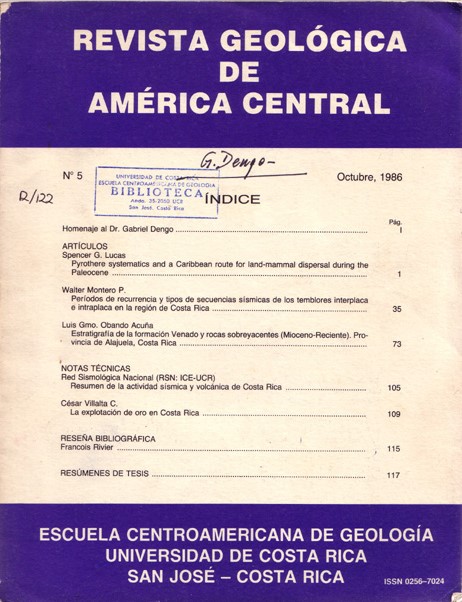Abstract
There are four principal units in this area:
- The Venado Formation (Middle Miocene-Later Miocene), composed by limestones, shales, tuffaceous sandstones, conglomerates,breccias and abundant coal seams.
- Buenavista Formation (Plio-P1eistocene?), overlying the Venado Formation , composed by laharic sediments, angular and chaotic rocks, and fine matrix. The Buenavista Formation covers great part of the Venado Formation.
- Igneous Rocks: the igneous rocks find in the area are:
1. Basaltic Andesite (Later Miocene), forming a volcanic structure. A dique penetrate the limestone of Venado.
2. Hipoabisal Andesite (Pliocene?), intrude the Venado Formation and Buenavista Formation.
3. Andesite (Recient?), with fluidal texture, black and fine grained (aphyric).
- Quaternary: The landslides are very important and had moved great masses of land.
The paleoenvironment of Venado Formation suggest an alluvial p1ain with marsh and swamps near the sea, between major fluvial systems. Perhaps stables stages depositional setting for the accumulation of peat were important. The volcanic flux were omnipresents in the sediments of Venado Formation, then the presence of young Volcanic Arc in expected.






